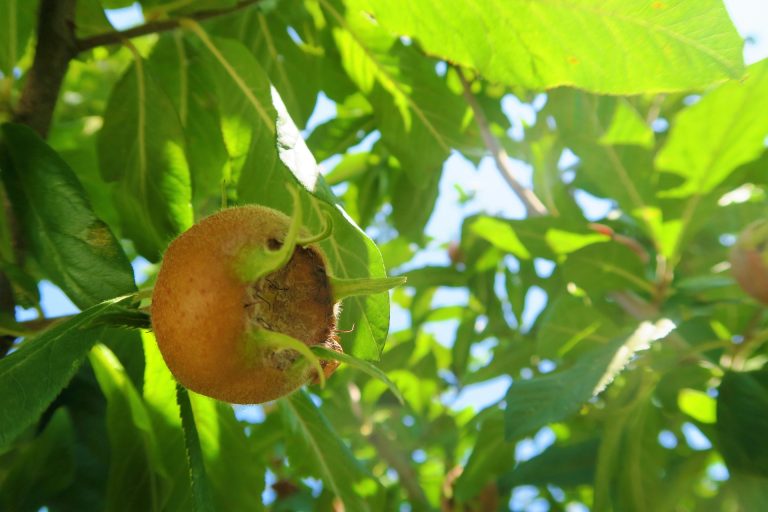Medlar Fruit: Exploring Its History, Cultivation, Nutritional Value, Health Benefits, and Culinary Uses
Introduction
The medlar fruit (Mespilus germanica) is an ancient and intriguing fruit that has captured the interest of fruit enthusiasts and historians alike. Known for its unusual appearance and distinctive flavor, the medlar has a rich history dating back to ancient times. This article aims to delve into various aspects of the medlar fruit, including its origins, cultivation practices, nutritional content, potential health benefits, and culinary uses, providing a comprehensive exploration of this unique fruit.

Origins and Historical Significance
The medlar fruit is believed to have originated in southwestern Asia and southeastern Europe, where it has been cultivated since ancient times. It was highly prized by the Greeks and Romans for its medicinal properties and was commonly depicted in ancient literature and artwork. The fruit’s Latin name, Mespilus germanica, reflects its Germanic origins and its early spread throughout Europe by Roman traders and settlers.
Botanical Characteristics
The medlar tree is a small deciduous tree or large shrub that belongs to the rose family (Rosaceae). It typically grows to a height of 4-8 meters and has a spreading, bushy habit. The leaves are dark green and ovate, turning shades of yellow and red in autumn. The flowers are white or pinkish, resembling apple blossoms, and bloom in late spring. The fruit itself is round to oval-shaped, about 2-3 centimeters in diameter, with a brownish skin that becomes wrinkled and leathery when ripe.

Cultivation
Medlar trees are hardy and adaptable, thriving in temperate climates with well-drained soil and full sun to partial shade. They are relatively low-maintenance once established, requiring occasional pruning to maintain shape and promote airflow. Medlars are self-fertile but benefit from cross-pollination for optimal fruit production. They are propagated through seeds or grafting onto rootstocks and can begin bearing fruit within 3-5 years after planting.
Nutritional Value
In terms of nutritional content, medlar fruits are moderate in calories but rich in dietary fiber, vitamins, and minerals. They are particularly high in vitamin C, which supports immune function and collagen production, as well as potassium, which helps regulate blood pressure and fluid balance. Medlars also contain notable amounts of vitamin K, manganese, and antioxidants such as flavonoids and phenolic compounds, which contribute to their potential health benefits.

Health Benefits
Consuming medlar fruits may offer several health benefits due to their nutrient profile and antioxidant properties. The high fiber content supports digestive health by promoting regularity and aiding in weight management. The presence of antioxidants helps combat oxidative stress and inflammation, potentially reducing the risk of chronic diseases such as cardiovascular disease and certain cancers. Additionally, the vitamins and minerals in medlars support overall well-being and vitality.
Culinary Uses
In culinary traditions, medlar fruits are known for their unique flavor profile, which combines sweetness with a hint of tartness and a slightly floral aroma. They are typically harvested after the first frost when their flesh softens and develops a rich, mellow flavor. Medlars are commonly used in both sweet and savory dishes, including jams, jellies, sauces, and preserves. Their natural pectin content makes them ideal for thickening and enhancing the texture of jams and preserves without the need for additional additives.

Traditional and Modern Applications
Historically, medlar fruits were often consumed fresh or cooked in medieval Europe, where they were prized for their medicinal properties and used in various remedies. Over time, their culinary use expanded to include a wide range of dishes, from desserts and pastries to savory sauces and accompaniments. Today, medlars continue to be appreciated in artisanal and gourmet cooking for their distinctive flavor and historical significance.
Commercial Viability and Challenges
While not as widely cultivated or commercially available as mainstream fruits, medlar cultivation has seen a resurgence in recent years, driven by interest in traditional and heirloom varieties. Challenges include the fruit’s short shelf life when ripe and its susceptibility to certain pests and diseases common to the rose family. However, dedicated growers and enthusiasts continue to explore new cultivars and cultivation techniques to enhance yield and quality.

Future Prospects
Looking ahead, the future of medlar fruits appears promising as consumer interest in unique and heritage fruits grows. Ongoing research into cultivation practices, disease resistance, and culinary innovations will likely expand their availability and appeal. Medlars represent a valuable addition to orchards and gardens, offering not only delicious fruit but also a connection to history and tradition.
Conclusion
In conclusion, the medlar fruit stands as a testament to the enduring appeal of ancient fruits and the potential for rediscovery in modern times. With its rich history, distinctive flavor, and potential health benefits, the medlar continues to captivate the curiosity of growers, chefs, and consumers alike. As interest in sustainable agriculture and diverse food choices grows, medlars offer a unique opportunity to explore the past while embracing the future of fruit cultivation and culinary arts.

